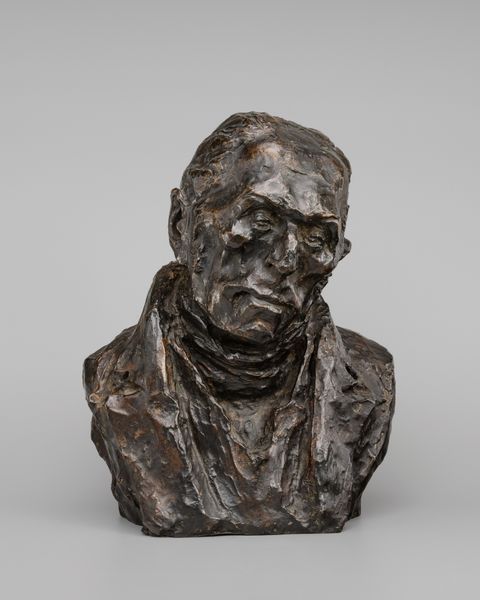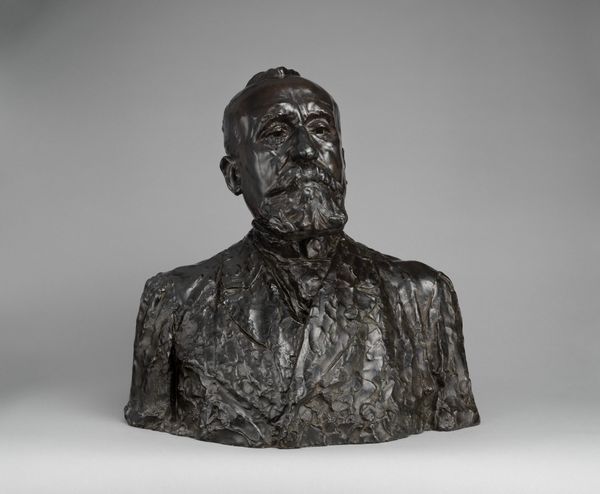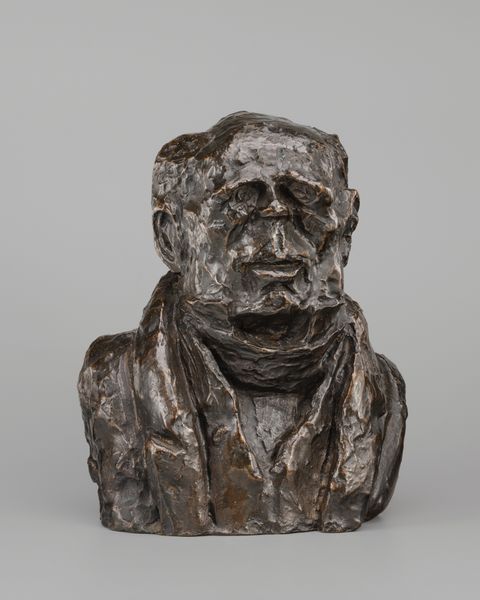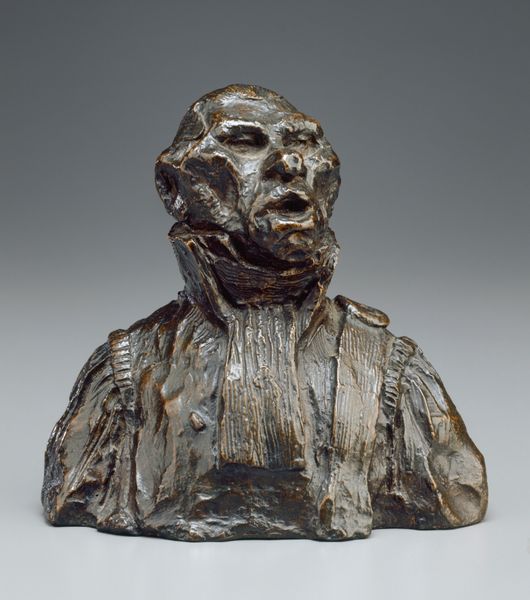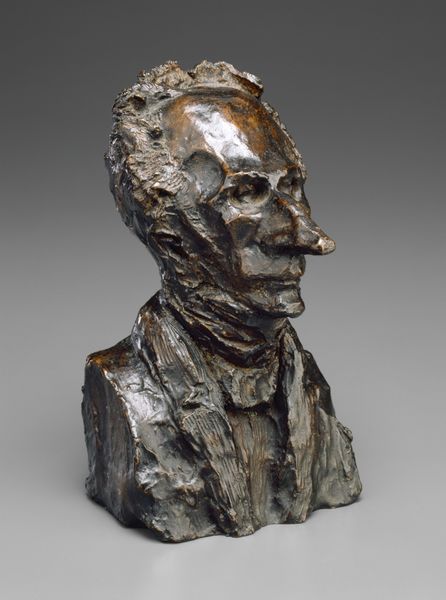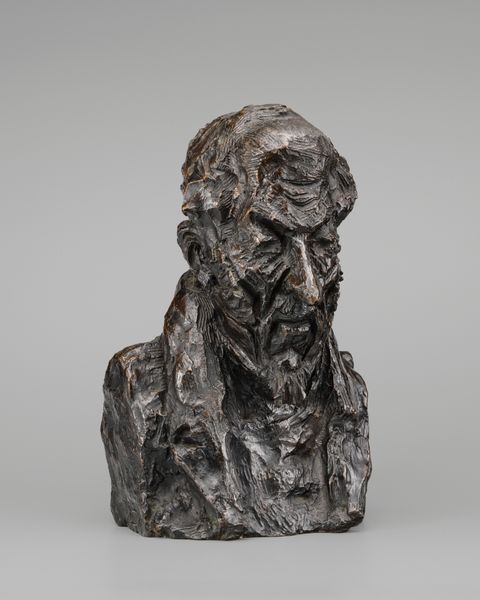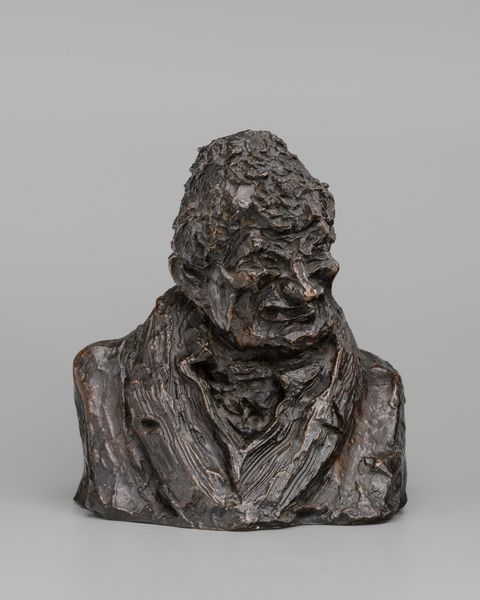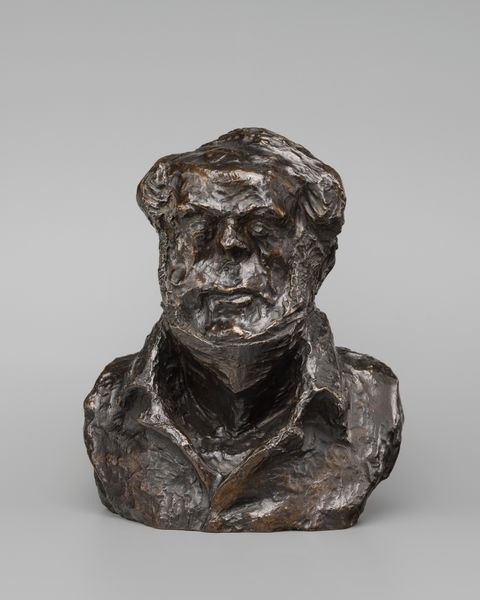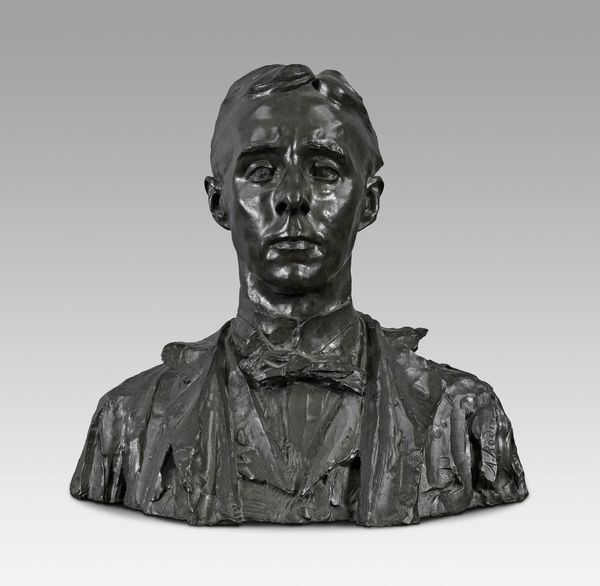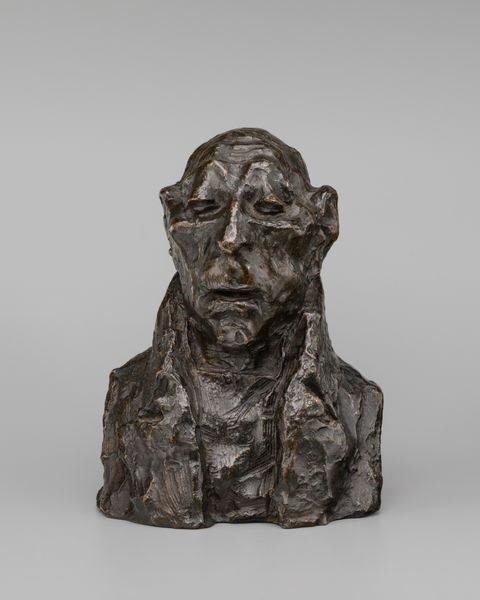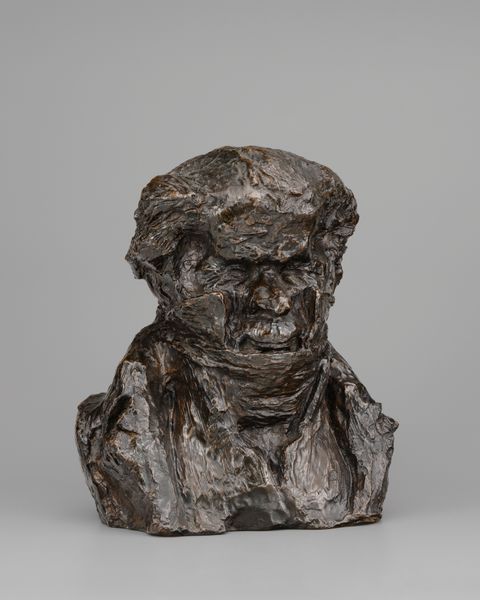
bronze, sculpture
#
portrait
#
sculpture
#
bronze
#
sculpture
#
realism
Dimensions: overall: 19.1 x 16.8 x 10.2 cm (7 1/2 x 6 5/8 x 4 in.)
Copyright: National Gallery of Art: CC0 1.0
Curator: Standing here, we have a compelling bronze sculpture attributed to Honoré Daumier, titled "Jean-Charles Persil," dating roughly from 1832 to 1940. Editor: It's intense. There's a haunting quality to it. The rough texture gives it a sort of brutal honesty; the face looks aged, marked by time, as if weighted down by years of service and experience. Curator: The fact that it is bronze gives the work gravity and permanence but also reveals the materiality and working of the medium. It speaks volumes, considering Daumier’s socio-political engagement in 19th-century France. The sculpture presents an opportunity to address issues of power, legal structures, and class divisions. Editor: Look at the uniform! A legal man. The symbols and decorations must represent the law. It would be interesting to consider this as Daumier's commentary on justice in that era. It could point toward legal power figures from this time and what this figure specifically stood for. It begs questions about the lasting effects and representations of law and power. Curator: Precisely. He captured many political and legal figures, not always in flattering lights. The work, produced around the July Monarchy or slightly later, invites us to analyze the role of legal figures in supporting or challenging oppressive systems. What was Daumier critiquing here through Persil's representation? And is this type representative of legal structures through time? Editor: The roughness makes him appear fragile yet stern. I wonder if that dichotomy was intentional; perhaps a visual representation of how those who hold authority are, in essence, only human despite wielding the law as power. Maybe he felt both burdened by the importance of the legal system, yet trapped within its boundaries. Curator: Those lines on his face, too; are they just the sculpting technique, or were they deliberate—marking his years? One cannot ignore the visual language of ageing within broader narratives about mortality and corruption within those legal echelons. Editor: It makes you consider the impact symbols and public image had—or still have—on perceived authority, linking directly back into perceptions of morality that underpin any legal framework! Curator: A piece ripe with intersectional inquiries, it makes you question whose image occupies our visual lexicon and why. Editor: Definitely a stark and very impactful portrait.
Comments
No comments
Be the first to comment and join the conversation on the ultimate creative platform.

